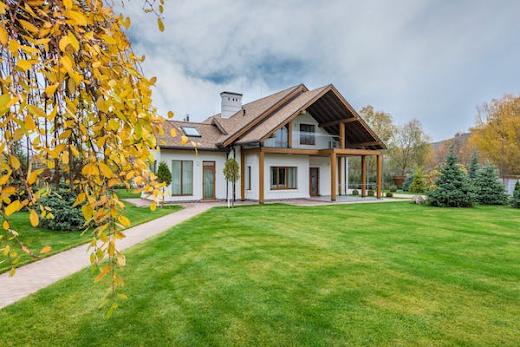In the dynamic world of architecture and design, technological advancements have always played a pivotal role in shaping the way we envision and construct spaces. Among these, Augmented Reality (AR) stands out as a revolutionary force, redefining the boundaries of creativity and practicality. This article embarks on a comprehensive exploration of the profound impact of AR in architecture and design, illuminating its applications, benefits, and the transformative influence it exerts on the creative process.
Narrow the gap between imagination and reality
Traditionally, architects and designers relied on blueprints, 2D drawings, and scale models to communicate their vision. However, even the most complex sketches often fail to capture the essence of three-dimensional space. Augmented reality acts as a powerful tool to bridge this gap by applying digital elements to the physical world. This provides real-time interactive representation of architectural designs, revolutionizing the way we perceive and interact with space.
Immersive design review: Enter plan
One of the most important advancements enabled by AR in architecture is the ability to conduct rich design reviews. With AR-enabled devices, architects and clients can virtually walk through a space and experience the design as if it were already built. This immersive experience provides a deep sense of scale, proportion and spatial relationships, transcending the limitations of 2D drawings or static models. It enables more informed decision-making and allows customers to provide accurate, actionable feedback.
Visualize design iterations: From idea to concrete
AR technology allows architects to visualize multiple design iterations in a real-world context. By overlaying different design options onto the existing environment, architects can compare and contrast different concepts on-site. This not only speeds up the decision-making process but also ensures that the final design fits perfectly with the client's vision. The ability to dynamically iterate on designs within a physical space is a game-changer in the creative process.
Analyze websites and understand context: Redefine accuracy
AR provides architects with an unparalleled tool to perform detailed site analysis. By overlaying digital information onto a physical site, architects gain invaluable insights into factors such as sun exposure, views and potential obstructions. hidden. This level of contextual understanding allows architects to design structures that not only form functional entities but also integrate seamlessly with their surroundings, achieving a harmonious balance between nature and architecture.
Improve customer engagement: From audience to participants
AR has the transformative power to engage customers and stakeholders in ways that traditional presentations cannot. Customers can actively participate in the design process by interacting with virtual models in real time. This level of engagement fosters a deeper sense of ownership and collaboration, leading to more satisfying outcomes for all parties involved. Clients move from passive observers to active contributors, forging stronger collaborative relationships with architects and designers.
Streamline communication: Intuitive design language
Clear communication is the foundation of successful design and architecture projects. AR simplifies complex concepts by providing a visual and intuitive representation of design ideas. Architects can use AR to vividly communicate their vision to clients, consultants, and construction teams. This not only reduces the risk of misunderstandings, but also ensures that everyone involved is on the same page as to the project's goals, fostering a collaborative environment built on common understanding.
Prototyping and testing AR support: From digital to tangible
AR allows designers to create virtual prototypes of furniture, accessories, and interior components. This allows for a more complete understanding of how these elements will function in a space. Additionally, AR can be used to simulate lighting conditions, material textures, and even sounds, providing designers with a comprehensive toolset to refine their ideas. By seamlessly integrating the physical and digital realms, AR facilitates a more comprehensive approach to prototype design and testing.
Conclusion: Shaping the Future of Design
Augmented Reality is not merely a technological trend; it is a paradigm shift in the world of architecture and design. By providing immersive, interactive experiences, AR not only bridges the gap between imagination and reality but also elevates the creative process to unprecedented levels of precision and engagement. As the technology continues to evolve, the integration of AR in architecture and design is poised to shape the future of the industry, ushering in a new era of creativity, collaboration, and innovation. Embracing AR is not just an option; it is a transformative imperative for architects and designers seeking to lead in the dynamic landscape of the built environment.


.png)


